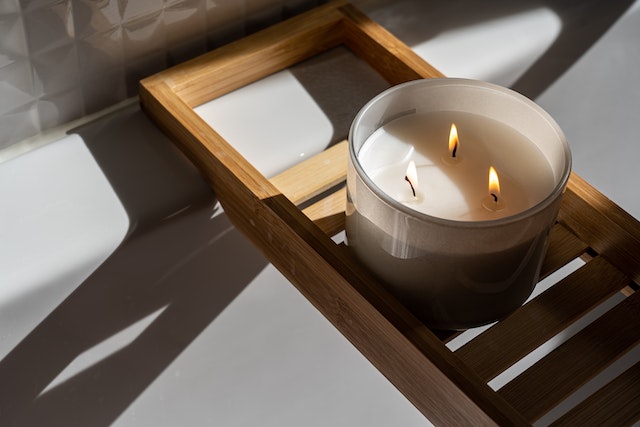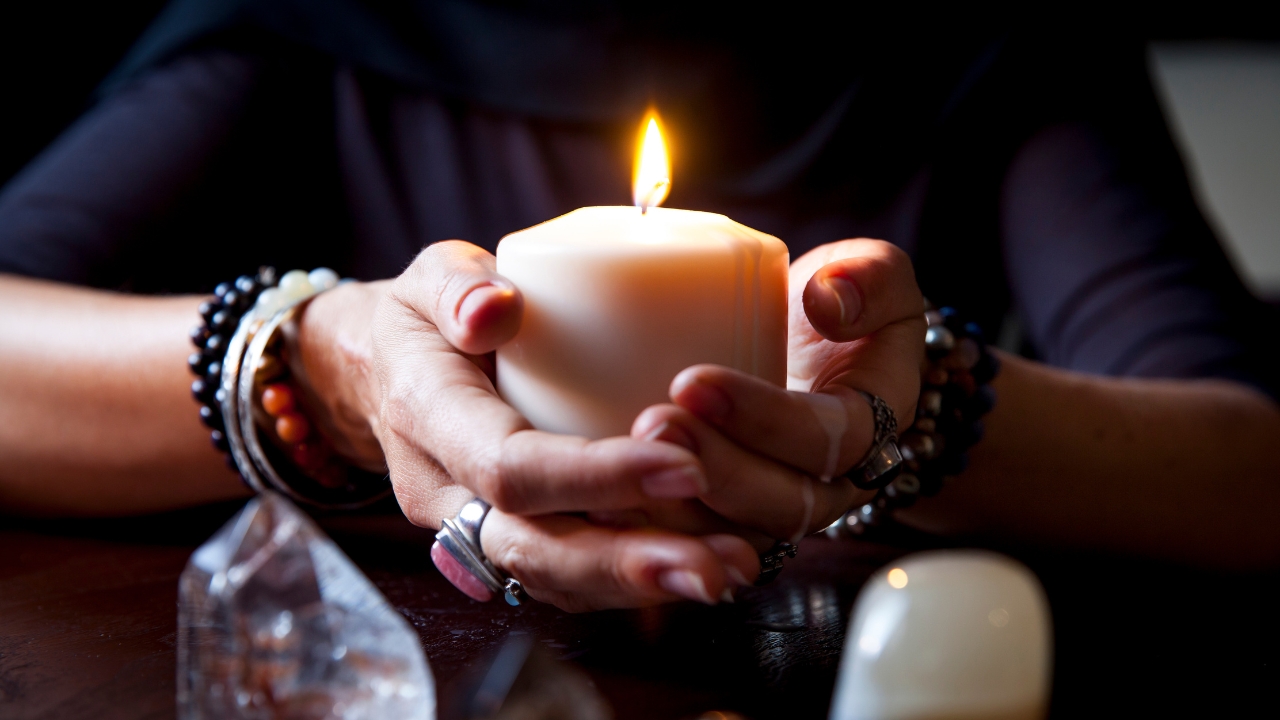Why Does The Candle Jar Turn Black?

Some candle jars turn black after burning for some time. Have you ever wondered why that happens? Or is the black thing resulting from candle flame normal?
If you are looking for answers to these questions, this post is for you. Today’s article will tell everything about candle jars turning black.
What Causes Candle Jar To Turn Black?
Sometimes, candle jars may develop black marks due to soot accumulation. It is a fine powdery substance composed of carbon particles released from the burning candle during incomplete combustion.
All candles can generate soot, regardless of their quality. It is either due to their manufacturing process or improper burning practices.
The candle wax mainly consists of hydrocarbons, large molecules containing carbon and hydrogen. During combustion, the wax vaporizes and reacts with oxygen in the air, producing light, heat, carbon dioxide, and water.
When you light a candle, the flame’s heat melts the wax’s top layer. The liquid wax is drawn up through the wick and serves as additional fuel for the flame. Ideally, if the rate at which the flame melts the wax and the rate at which the wax fuels the flame are perfectly balanced, you will observe a calm and steady candle flame.
Incomplete combustion arises when the balance is disrupted. If the wax is drawn into the flame faster than it can be burned, the surplus wax is expelled as soot. This soot may manifest as black smoke, gradually depositing itself on the rim and sides of the candle jar.
In short, the candle jar turns black when the candle fails to burn cleanly. This situation can be influenced by various factors, such as:
Type Of Wax
The type of wax used in candles plays a significant role in their tendency to turn black. Paraffin wax candles, in particular, are more prone to producing black smoke and soot during burning. On the other hand, candles made from vegetables, beeswax, or soy wax tend to burn more cleanly.
All candles produce some soot, but the quantity and appearance may vary based on the quality and type of wax used. Additionally, fragrance oils and additives in the wax can increase soot production.
Flickering Flame
A perfectly burning candle emits a steady and calm flame, whereas a flickering flame indicates an inconsistent combustion rate.
Initially, it is normal for a newly lit candle to flicker until the flame stabilizes into a teardrop shape. However, if the flickering continues for an extended period, the candle jar becomes more likely to accumulate black, powdery soot.
Length Of Wick
The length of the wick also influences the occurrence of black soot in the candle jar. Longer wicks produce hotter and larger flames, accelerating the melting of surrounding wax and providing more fuel to the flame.
This imbalance between the rate of wax drawn into the wick and its combustion with oxygen in the air leads to incomplete combustion. This results in the release of excess wax as soot.
Can I Keep A Candle Burning In A Black Jar?
It is essential to understand that candle soot is a natural by-product of the combustion process. While it is not harmful in small amounts, inhaling excessive quantities can pose some risks.
It should be noted that certain components of the wax do not burn completely. Instead, they melt and form a “candle grease.” You should avoid candle grease from reaching your eyes or skin, as it can cause burns and irritation.
The presence of soot on the insides of your candle jar is not dangerous. You can continue burning your candle without worry.
Tips To Keep A Candle Jar From Turning Black
To maintain the beauty of your candle jars and prevent them from turning black due to soot, you can follow these four essential steps:
Buy High-Quality Candles
Opt for well-made candles crafted from high-quality wax or other premium materials. Avoid cheaper paraffin candles, as they are more prone to producing soot.
Trim Wicks Regularly
To prevent excessive soot formation, you should regularly trim the wick. Before each burn, trim the wick to minimize sooting.
Keep Candles Away From Drafts
Position your candle jars away from drafts. Excessive airflow can cause the flame to flicker, altering the burning rate and accumulating soot on the candle jar.
Extinguish Candles Properly
Avoid blowing out the candle flame, as it can release a cloud of soot-containing smoke. Instead, use a candle snuffer or a candle lid to extinguish the flame cleanly.
Candle jars turning black are common. It can happen to any candle due to incomplete combustion. But you can clean it off using a damp piece of cloth.
Visit Malacware.com to read more articles on candle jars.
Subscribe To Our Newsletter
Subscribe for your email and get 10% off your first order!
© 2023 Malac Import Export Pvt Ltd, All rights reserved.






